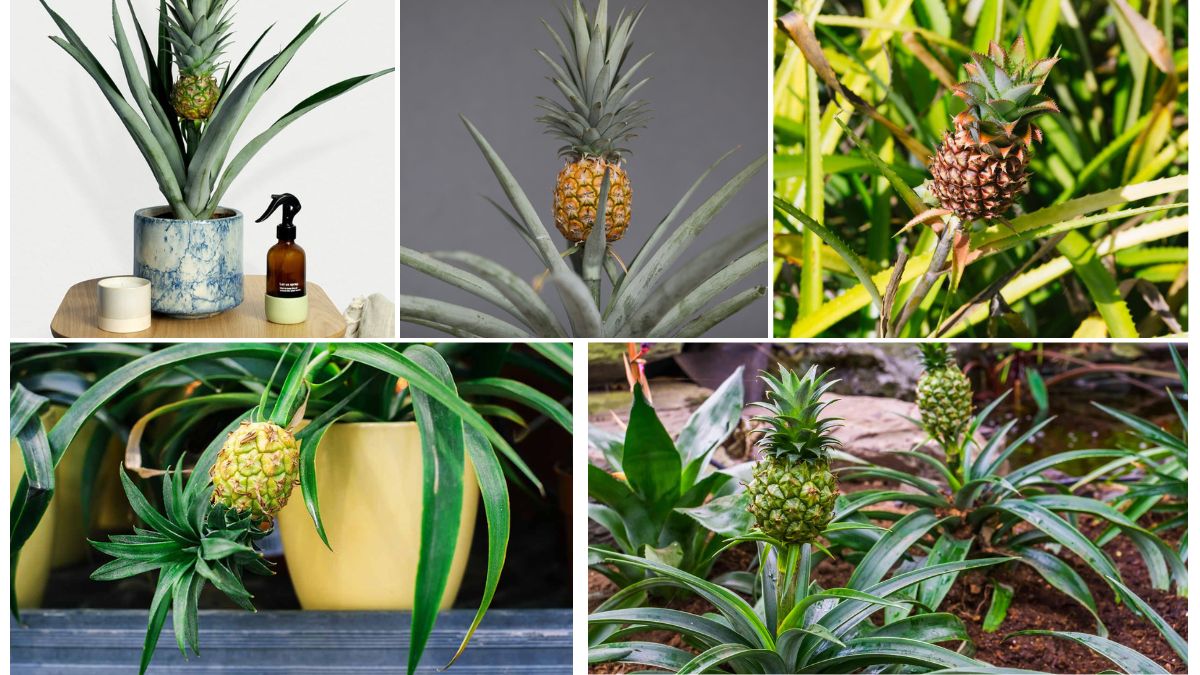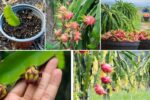Growing pineapples indoors may sound like a tropical dream, but it’s absolutely achievable—even in small urban apartments. With the right care, environment, and a touch of patience, your indoor pineapple plant can thrive and eventually reward you with sweet, homegrown fruit. This guide offers beginner-friendly tips and essential know-how to help you master the art of growing pineapples indoors.
Why Grow Pineapples Indoors?
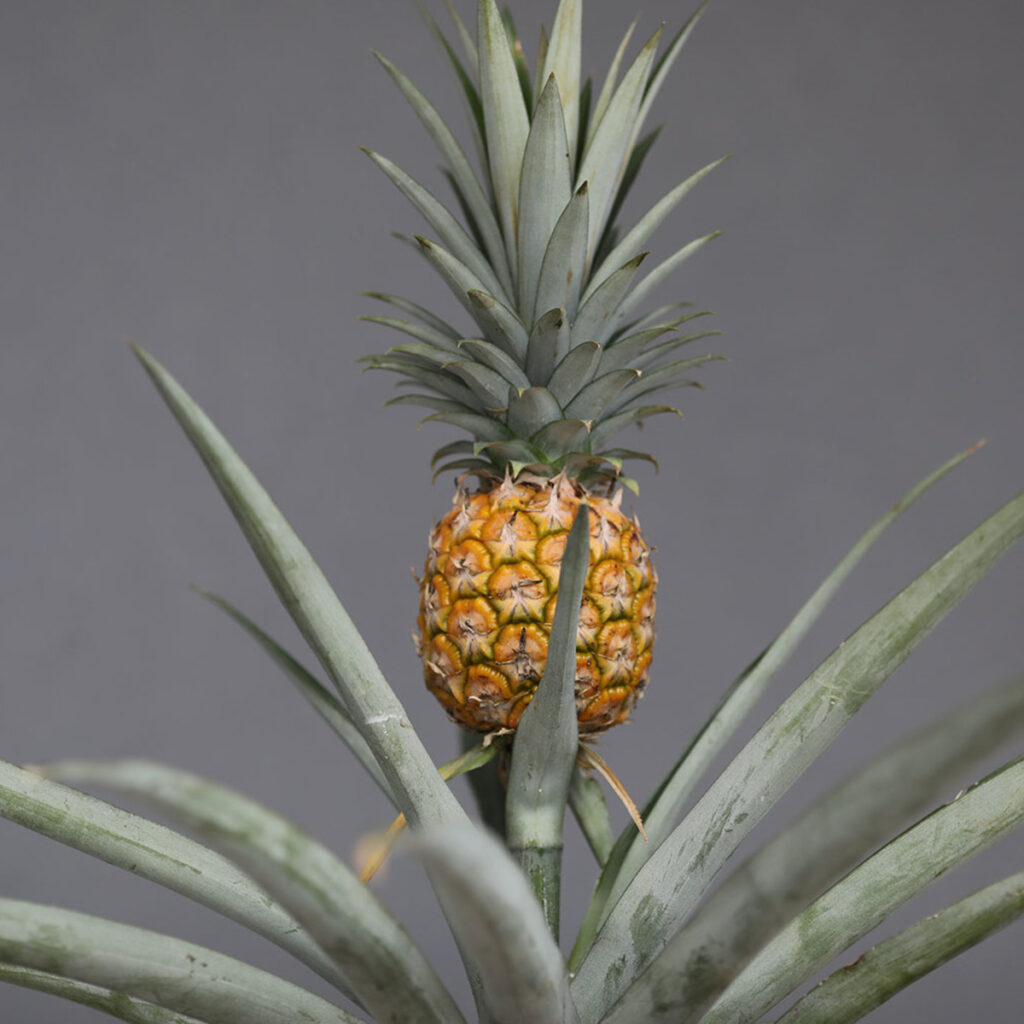
Pineapples (Ananas comosus) are native to warm climates, which makes them ideal for indoor cultivation in cooler regions. Indoor growing allows gardeners to control environmental factors such as light, temperature, and water more effectively. Pineapples are also surprisingly tolerant of container life, requiring minimal space while adding a decorative, tropical flair to your home.
Getting Started: What You’ll Need
Before planting, gather the essential tools and supplies:
- A ripe pineapple (with a healthy crown)
- A sharp knife
- A well-draining potting mix (sandy or cactus mix works well)
- A container with drainage holes (8–12 inches wide)
- Warm, sunny spot or grow light
Once you have these items ready, you can begin preparing your plant.
Step-by-Step Guide to Starting Your Pineapple Plant Indoors
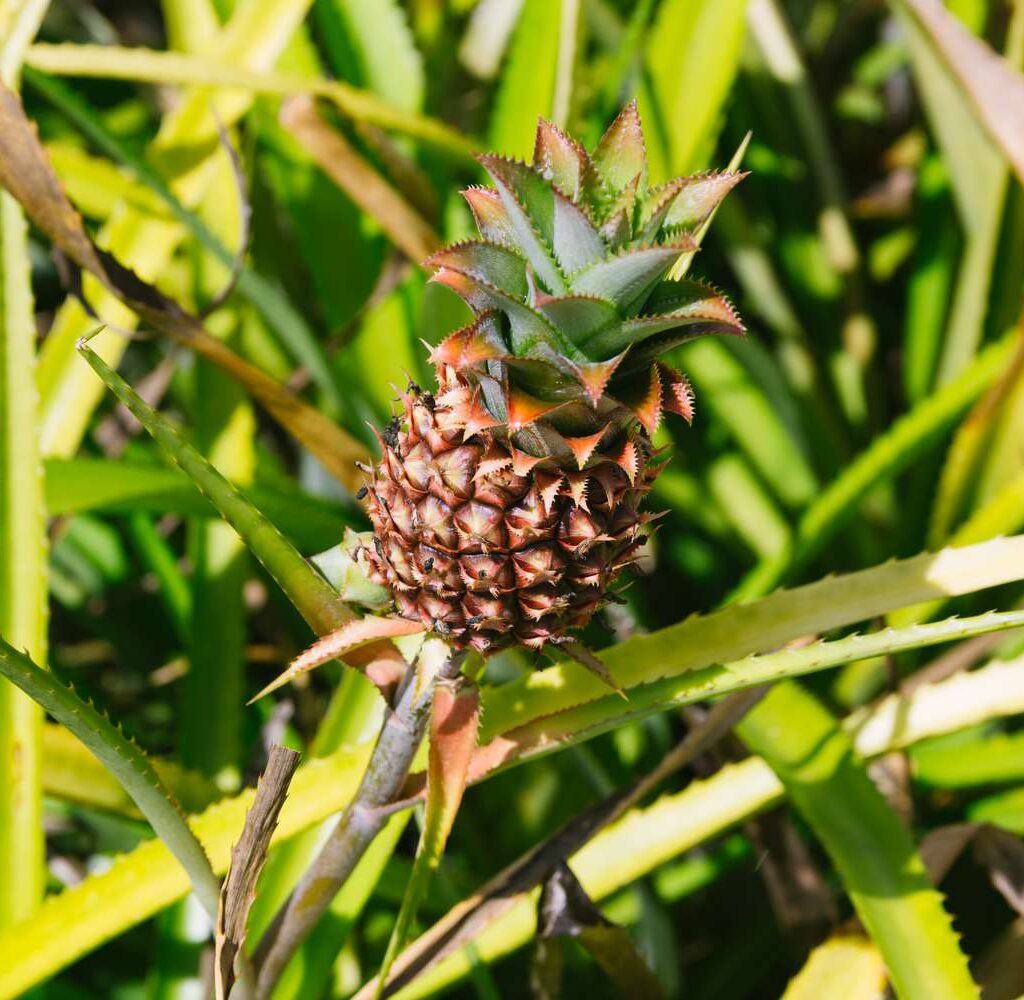
1. Choose the Right Pineapple
Select a ripe, healthy pineapple with green, unblemished leaves on the crown (top). Avoid fruits with mushy spots or browning leaves, as these are signs of poor health.
2. Remove and Prepare the Crown
- Twist or cut the leafy crown from the top of the pineapple fruit.
- Peel away a few layers of the lower leaves to expose about 1 inch of the stem.
- Allow the crown to dry for 1–3 days in a shaded area to prevent rot.
3. Rooting the Pineapple Top
- Place the crown in a glass of water (only the exposed stem should touch the water).
- Keep the glass in a warm, bright location.
- Change the water every couple of days.
- Roots should appear in about 2–3 weeks.
Alternatively, you can skip the water step and plant the dried crown directly into potting mix. Just keep it slightly moist until roots form.
Ideal Conditions for Indoor Pineapple Growth
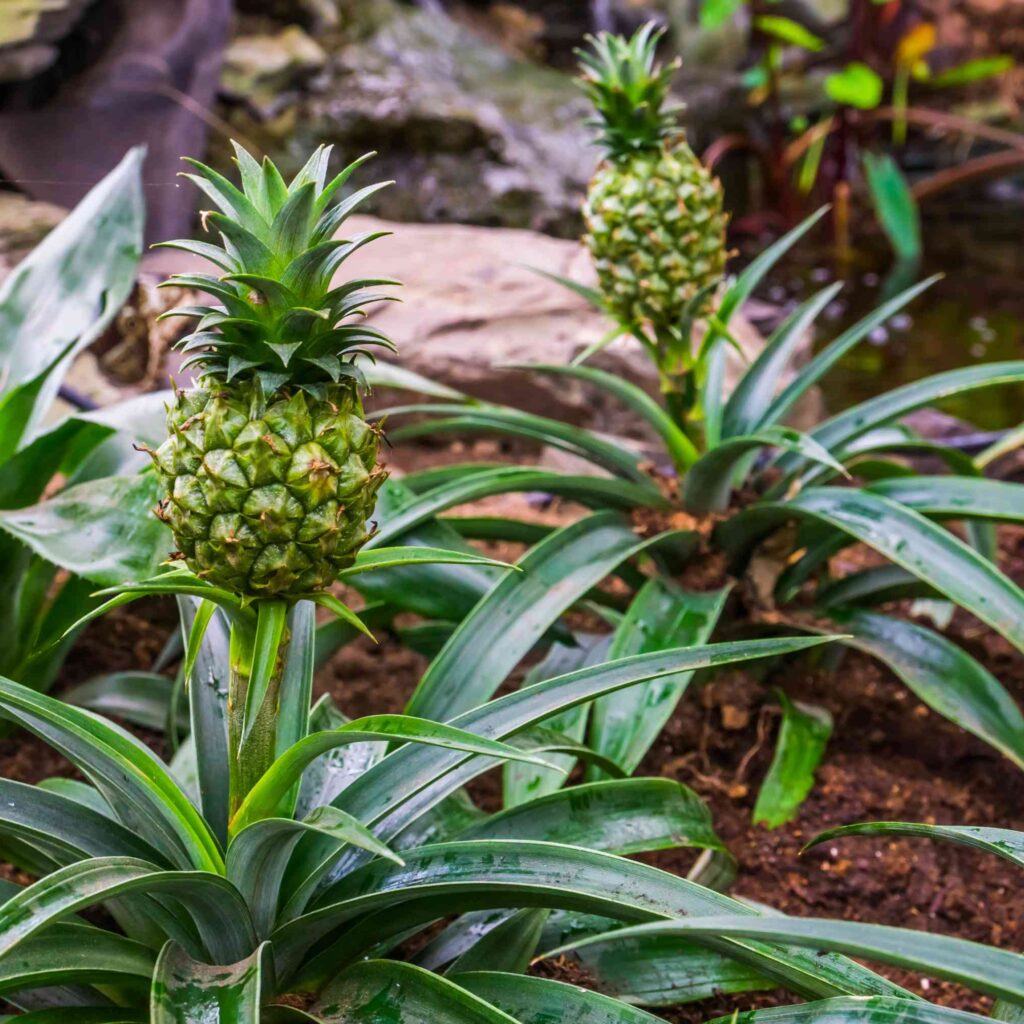
Pineapple plants are low-maintenance, but they still need optimal growing conditions:
1. Lighting Needs
Pineapples need at least 6 hours of bright light daily.
- South-facing windows work best.
- If natural light is limited, use LED grow lights to supplement.
- Rotate the pot regularly to ensure even growth.
2. Temperature & Humidity
Pineapples love warmth! Maintain indoor temperatures between 65°F to 85°F (18°C to 29°C).
- Avoid drafts and cold windowsills.
- If humidity is low, mist the leaves occasionally or place the pot on a humidity tray.
3. Soil Requirements
Well-draining soil is crucial to prevent root rot.
- Use a cactus or succulent mix, or make your own with sand, perlite, and compost.
- pH range should be slightly acidic to neutral (4.5–6.5).
Watering Your Indoor Pineapple Plant
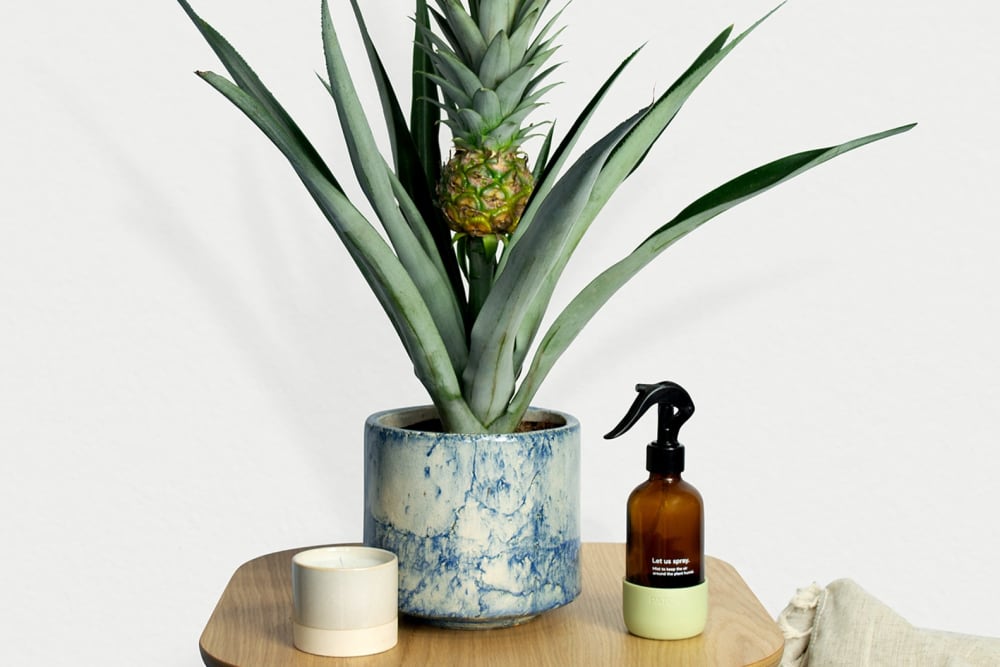
Pineapple plants are drought-tolerant but do require consistent moisture—especially while establishing.
- Water deeply when the top inch of soil is dry.
- Avoid overwatering or letting the pot sit in standing water.
- In cooler months, reduce watering frequency.
Tip: Pour a small amount of water into the central cup (rosette) of the leaves occasionally. Pineapples naturally absorb water through this area.
Fertilizing for Healthy Growth
Feed your plant during the growing season (spring through early fall):
- Use a balanced liquid fertilizer (10-10-10 or 14-14-14) once a month.
- Alternatively, a slow-release granular fertilizer can be applied every 2–3 months.
- Avoid over-fertilizing—this can lead to salt buildup or leaf burn.
You can also apply diluted organic options like compost tea, seaweed extract, or fish emulsion for more natural feeding.
Managing Growth and Repotting
Pineapples are slow growers but can become top-heavy over time.
- Repot every 1–2 years or when roots begin to outgrow the container.
- Choose a slightly larger pot with good drainage.
- Be cautious while handling—pineapple leaves have sharp edges.
Encouraging Flowering and Fruiting Indoors
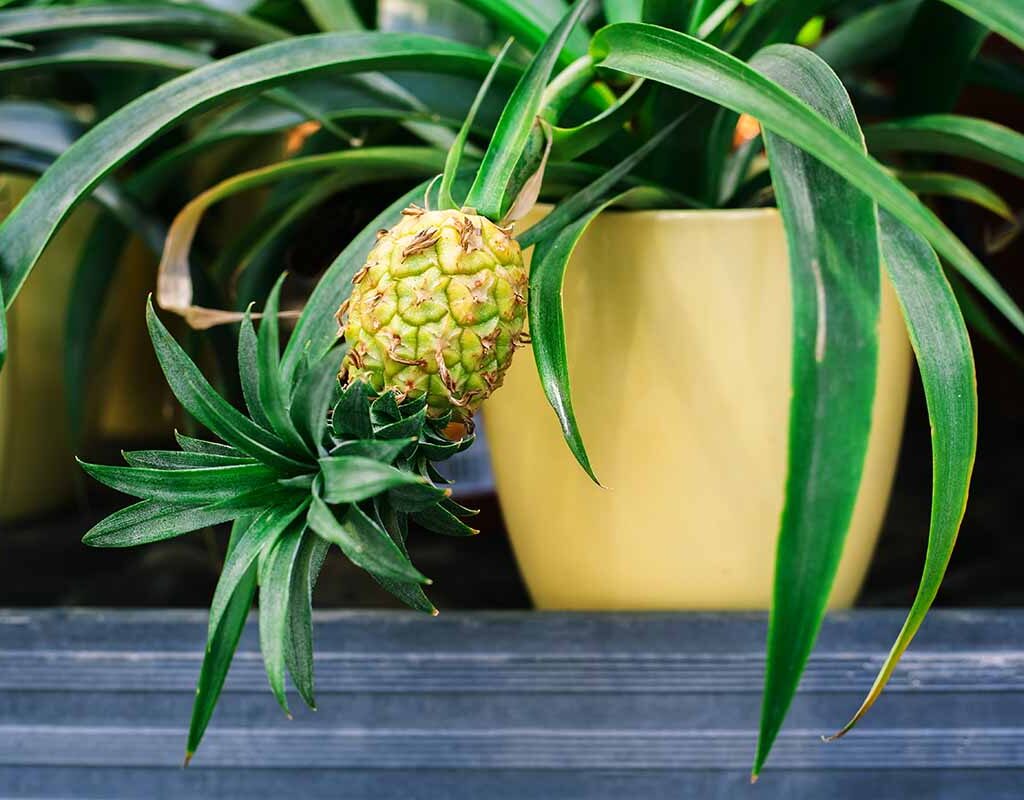
One of the biggest challenges of indoor pineapple growing is getting the plant to flower and bear fruit. Here’s how you can help:
1. Age Matters
Pineapple plants typically take 2–3 years to mature and produce fruit. Patience is key!
2. Ethylene Gas Trick
Ethylene encourages flowering. Once the plant has matured, try this method:
- Place a ripe apple or banana in a plastic bag with the pineapple plant for 2–3 days.
- Ethylene released from the fruit can stimulate blooming.
- Repeat monthly until flowering occurs.
3. Light and Nutrition
Ensure your plant is getting enough light and nutrients. Weak lighting or nutrient deficiencies can delay flowering.
Once flowering begins, it takes about 5–6 months for the fruit to develop and ripen.
Common Issues and Troubleshooting
1. Yellowing Leaves
- Often a sign of overwatering or poor drainage.
- Check roots for rot and adjust watering.
2. Browning Leaf Tips
- Caused by low humidity, salt buildup, or underwatering.
- Mist leaves and flush the soil with water occasionally to remove excess salts.
3. Slow Growth
- Usually due to insufficient light or cold temperatures.
- Relocate to a sunnier spot or add grow lights.
Benefits of Growing Pineapple Indoors
- Aesthetic Appeal: Pineapple plants have bold, sword-like foliage that adds tropical beauty.
- Air Purification: Like many houseplants, pineapples help clean indoor air.
- Educational Value: Growing pineapples can be a fun, educational project for kids and adults alike.
- Sustainable Gardening: Growing from scraps promotes sustainability and reduces waste.
Final Thoughts
Growing pineapples indoors may take time and patience, but the process is simple and deeply rewarding. With the right setup—sunlight, warmth, well-draining soil, and proper care—you can enjoy a thriving pineapple plant right in your living room. Whether you’re a beginner or a seasoned indoor gardener, these tips will help you confidently grow and eventually harvest your own pineapple from the comfort of home.
So go ahead, give your grocery store pineapple a second life—and bring a bit of the tropics into your home year-round!
